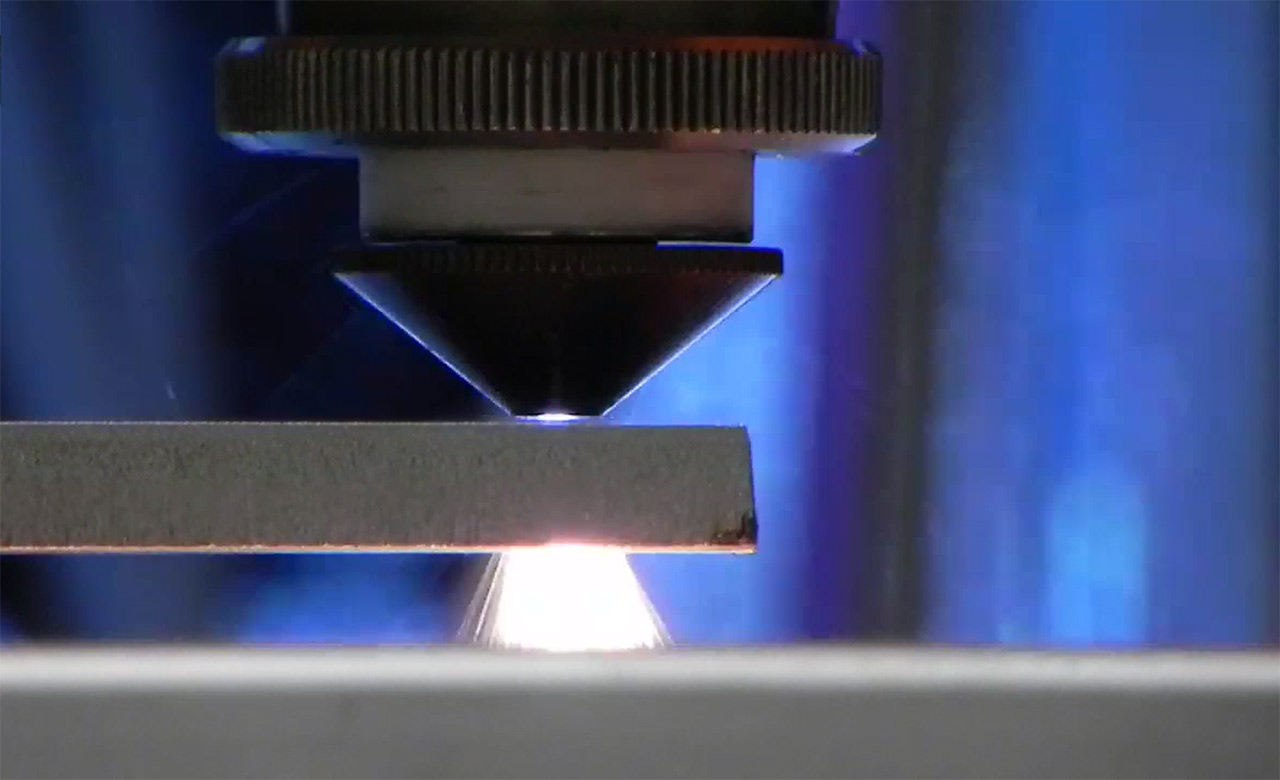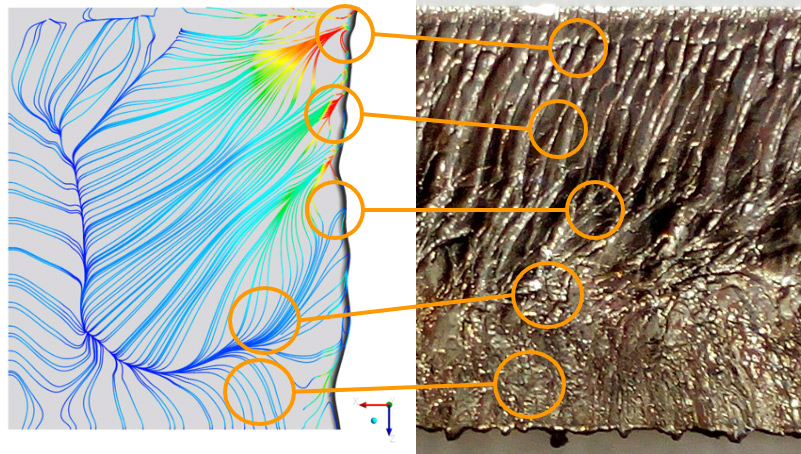The potential of dynamic beam oscillation for the laser cutting process lies in the improvement of the cutting edge quality or the increase of the cutting speed at the same laser power. The inclusion of two- and increasingly three-dimensional oscillating beam motion in the variable parameter field of laser cutting opens up opportunities for process optimization and raises new questions. The development progress is strongly influenced by system-technical possibilities or defines the requirements for the system technology. Many years of experience in the development of application-adapted processes, a strong partner network and the know-how in the development of our own system and control technology pilot solutions contribute to the constant gain in knowledge and the successful implementation of projects.
System Development
Video: Temperature field of the process zone during laser fusion cutting of high-alloy, 12 mm thick steel. © Fraunhofer IWS
Sensor technology provides the data basis for optimizing a cutting process in terms of speed and quality and for stabilizing it for use around the clock. For thermal processes, the temporally and spatially resolved temperature field of the process zone provides immense information about the current state. By combining competences in camera technology, temperature calibration, optical design and process know-how, a sensor system has been developed which enables temperature field detection and evaluation under the specifics of a cutting process, a nozzle as aperture diaphragm and constantly changing observation planes. This is possible both for the standard process and in combination with dynamic beam shaping.
Current work deals with the use of AI algorithms to make the developed hardware solution usable for process control.
Fluidic Components
In addition to melting, the expulsion of the molten material is an essential part of the process, which significantly influences the cutting speed and quality. In cooperation with the process design and analysis group, simulation and experiment are combined and new findings are developed for increasing performance, improving cutting edge quality and reducing gas consumption.
In mechanical processes, tool wear and the introduction of force into the workpiece are the driving forces behind the search for alternatives for cutting hard or soft materials. Laser beam cutting is a suitable technology here because the tool is always sharp and non-contact. The process defines its cutting performance via the absorption behavior, specific melting temperature and thermal conductivity of the material to be cut. Due to the scalability of the laser power, the movement dynamics of the laser system currently limit the achievable process speed.
1D cutting
In the case of laser length cutting, the dynamics of movement are no longer a limiting element. A test bench developed at Fraunhofer IWS now sets almost no limits to the feed rate and thus enables investigations into laser slitting at extreme feed rates. The laser source, optics configuration and the material to be cut can be flexibly selected. In addition, high-speed images of the cutting process can be recorded to support individual process design. As part of process studies, Fraunhofer IWS cut grain-oriented electrical steel 230 micrometers thick at a speed of up to 500 meters per minute in series quality. It was possible to shift the previously existing limits so that the melt flow rate is now the new limiting element. The insights gained from high-speed recordings on melt flow generate important findings for requirements for an improved nozzle design, which are essential for the design of a process suitable for series production. The experimentation environment is suitable for subjecting longitudinal laser cutting systems for a wide range of materials to a “proof of concept” without the need for a complex set-up.
2D cutting
In the contour cutting of thin sheets (up to ≈ 1.5 mm material thickness), the dynamics of movement limit the increase in process speed. With the development of the EDcut, a development platform is now available to overcome these limits. In addition to the further development of the system technology, the optimization of the cutting technology is being driven forward. The holistic consideration of motion dynamics and the laser cutting process are the focus here. The extremely dynamic EDcut cutting system coupled with fiber-guided solid-state lasers is available for feasibility studies, technology and system engineering developments.
Video: Plant for process development for high-speed longitudinal cutting up to 600 m/min.
© Fraunhofer IWS
 Fraunhofer Institute for Material and Beam Technology IWS
Fraunhofer Institute for Material and Beam Technology IWS

